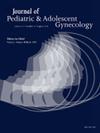56. 告知教育的主动性:在一项多州研究中,年轻女性月经教育的来源和满意度
IF 1.8
4区 医学
Q3 OBSTETRICS & GYNECOLOGY
引用次数: 0
摘要
尽管大学生接受过高等教育,但他们仍然存在经期贫困(无法获得有关经期管理的资源和知识)。本研究旨在探讨月经问题的辅导经验与教育偏好,以及辅导来源与满意度的相关关系。研究结果可能为未来针对年轻女性的月经健康教育提供信息。方法采用滚雪球抽样法对美国本科在读女生进行素质调查。收集的信息包括人口统计,对月经教育的偏好,以及月经问题寻求帮助的经历。采用SPSS v29进行卡方拟合优度检验和独立性检验。结果来自9个州102名参与者的结果进行了分析。大多数为白人(91.2%)和非西班牙裔(89.2%),年龄在18至28岁之间(平均19.6,SD±1.62)。76.5%的人毕业于公立高中,19.6%的人毕业于私立高中,2.9%的人毕业于外国高中,0.9%的人毕业于职业高中。月经教育的首选场所是医生办公室(25.48%,p<;0.001),其次是网络(18.25%)、家庭(14.83%)和社交媒体(14.83%)。学校明显是最不受欢迎的,小团体(14.07%,p=0.025)比礼堂(12.55%,p=0.002)更受欢迎。在学校学习的最感兴趣的话题包括何时因月经健康问题去看医生(15.33%,p<;0.001)和常见月经问题的迹象(14.18%,p=0.010)。在小群体中,学习免费或打折期产品的偏好接近显著性(p=0.059)。满意度因帮助来源而异。咨询母亲的满意度更高(p<;0.001)或医疗保健提供者(p=0.02)。有趣的是,尽管女性对在线学习有轻微的偏好,但那些在网上寻求帮助的人的满意度下降了(p=0.014),如果她们根本不寻求帮助,她们会不满意(p=0.014;0.001)。结论要解决大学生经期贫困问题,关键是要优先考虑从可靠来源获得教育,特别是医疗保健提供者和家庭,同时在学术和家庭环境中营造支持性环境。学校的关键举措应侧重于认识到常见的月经问题,并知道何时寻求医疗帮助。此外,免费或打折月经用品的信息应以小组形式提供。本文章由计算机程序翻译,如有差异,请以英文原文为准。
56. Informing Educational Initiatives: Sources and Satisfaction of Menstrual Education Among Young Women in a Multi-State Study
Background
Period poverty (inadequate access to resources and knowledge regarding menstruation management) has been observed in college students, despite their access to higher education. This study aims to explore experiences seeking guidance for menstrual problems and education preferences, while investigating correlations between guidance sources and satisfaction. The findings may inform future menstrual health education initiatives for young women.
Methods
A Qualtrics survey was distributed via snowball sampling to females enrolled in U.S. undergraduate programs. Information collected included demographics, preferences on menstrual education, and experiences with seeking help with menstrual problems. Chi-square goodness of fit and independence tests were performed using SPSS v29.
Results
Results from 102 participants across 9 states were analyzed. The majority were White (91.2%) and Non-Hispanic (89.2%), with ages ranging from 18 to 28 (average 19.6, SD±1.62). Of the respondents, 76.5% graduated from public high school, 19.6% from private high school, 2.9% foreign high school, and 0.9% trade school. The significantly preferred setting for menstrual education was doctors’ offices (25.48%, p< 0.001), followed by online (18.25%), home (14.83%), and social media (14.83%). School was significantly least preferred, with small groups (14.07%, p=0.025) favored over auditoriums (12.55%, p=0.002). Top topics of interest for learning about in school included when to see a doctor for menstrual health issues (15.33%, p< 0.001) and signs of common menstrual problems (14.18%, p=0.010). A preference for learning about free or discounted period products in small groups approached significance (p=0.059). Satisfaction levels varied by source of help. Higher satisfaction was reported by those consulting mothers (p< 0.001) or healthcare providers (p=0.02). Interestingly, despite a slight preference for online learning, satisfaction decreased for those seeking help online (p=0.014), and women were dissatisfied if they did not seek help at all (p< 0.001).
Conclusions
To address period poverty among college students, it is crucial to prioritize accessible education from trusted sources, particularly healthcare providers and family, while fostering supportive environments in both academic and home settings. Key initiatives in schools should focus on recognizing common menstrual issues and knowing when to seek medical help. Additionally, information about free or discounted menstrual products should be provided in small groups.
求助全文
通过发布文献求助,成功后即可免费获取论文全文。
去求助
来源期刊
CiteScore
3.90
自引率
11.10%
发文量
251
审稿时长
57 days
期刊介绍:
Journal of Pediatric and Adolescent Gynecology includes all aspects of clinical and basic science research in pediatric and adolescent gynecology. The Journal draws on expertise from a variety of disciplines including pediatrics, obstetrics and gynecology, reproduction and gynecology, reproductive and pediatric endocrinology, genetics, and molecular biology.
The Journal of Pediatric and Adolescent Gynecology features original studies, review articles, book and literature reviews, letters to the editor, and communications in brief. It is an essential resource for the libraries of OB/GYN specialists, as well as pediatricians and primary care physicians.

 求助内容:
求助内容: 应助结果提醒方式:
应助结果提醒方式:


